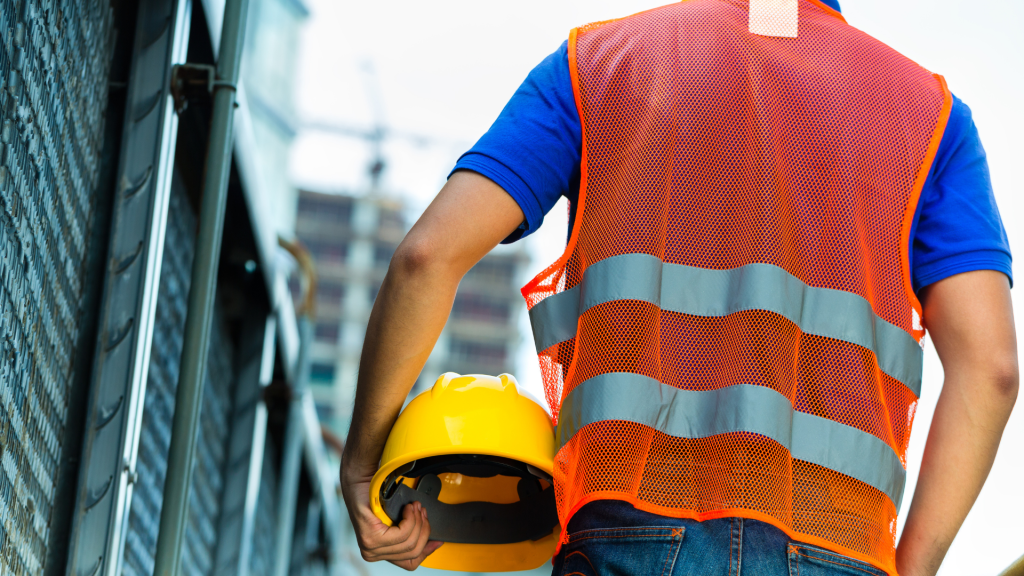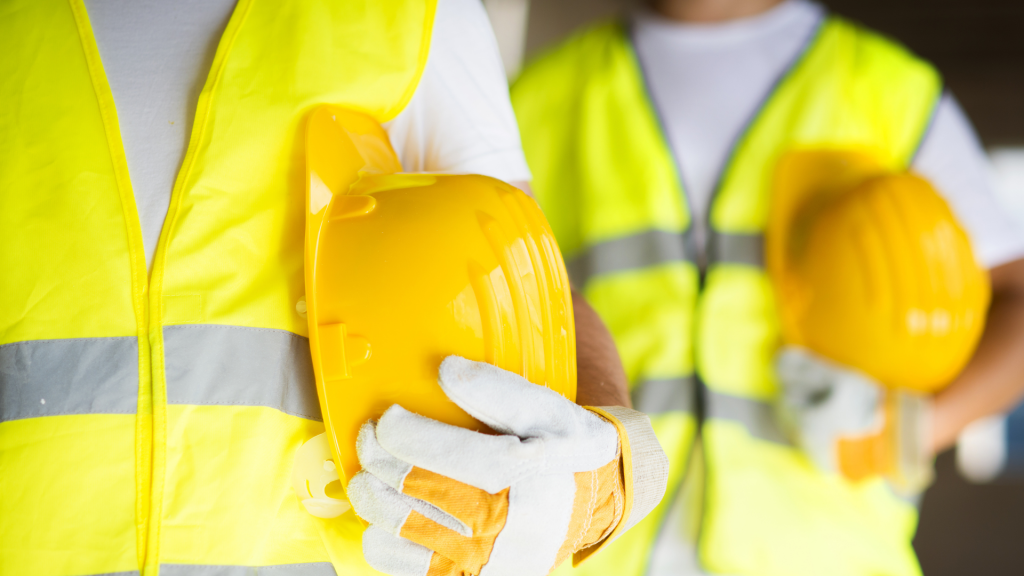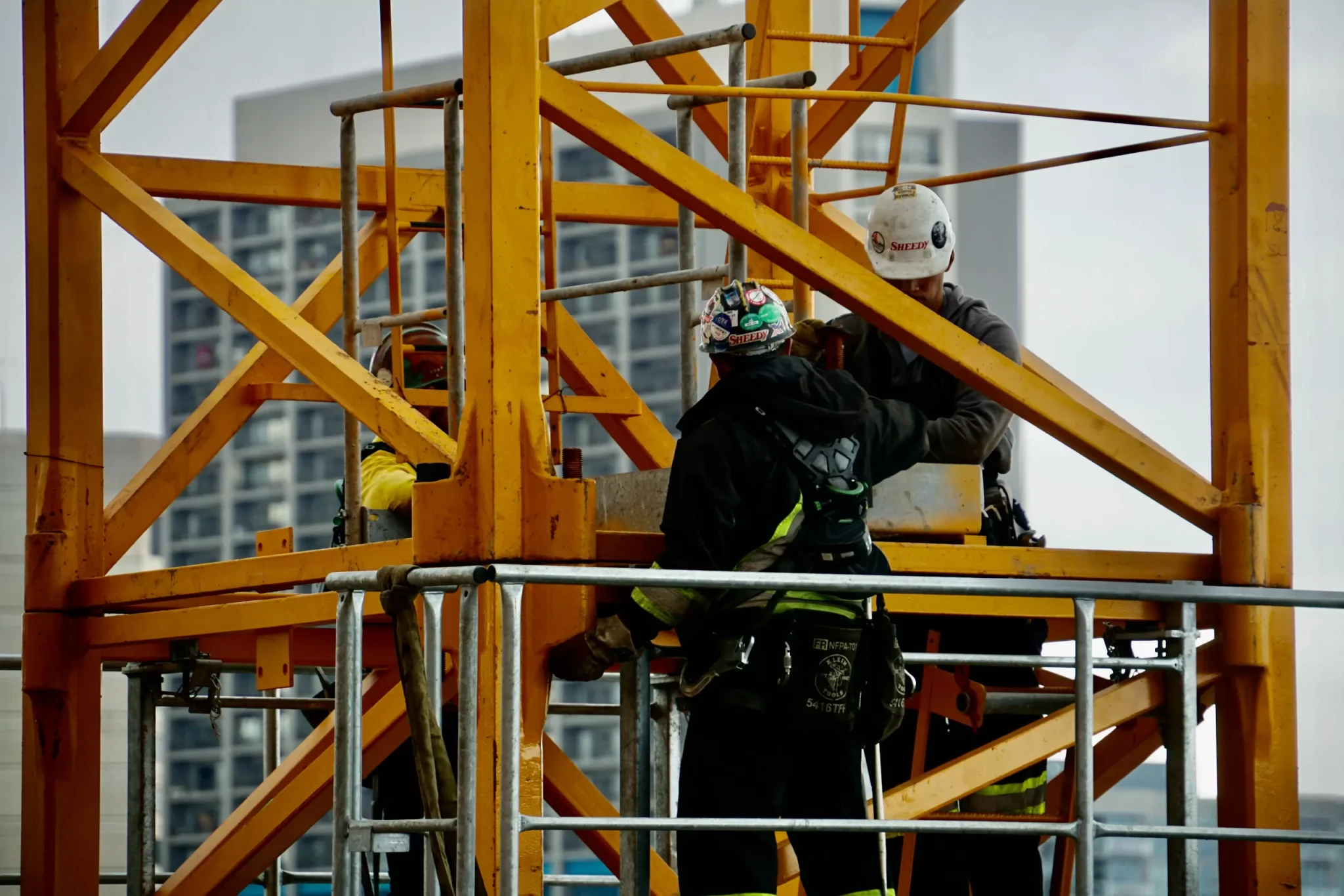
Personal protective equipment, referred to as PPE, is an integral part of construction work. PPE for construction safety is to prevent serious workplace injuries and illnesses. Well-worn PPE can effectively protect workers from health and safety issues. Such issues can affect workers’ heads, eyes, ears, lungs, and even their skin. This may result in long-term issues that affect the workers. Proper usage of appropriate PPE for tasks can often be the difference between life and death. Here are six (6) types of PPE and their benefits:
1. Fall Protection
According to WSH, falls from height is a top contributor to workplace fatalities. In the construction industry, falls from height contribute to more than a third of workplace fatalities. Construction workers are often required to work on elevated worksites. Hence, they must be provided with the appropriate fall protection equipment. By doing so, workers can work safely and prevent accidents from occurring. Fall prevention equipment includes anchors, rope grabs, and retractable lanyards. Anchors secure workers onto the elevated work platform. This prevents them from falling off the high workspace. Fall protection equipment such as self-retracting lanyards (SRL) and shock-absorbing lanyards provides an extra safety layer. They prevent injuries by arresting a fall after it has occurred. Hence, adopting fall protection equipment offers workers multiple layers of safety, potentially preventing fatal accidents.
2. Head and Feet Protection
Being struck by falling objects (SBFO) a common hazard in the construction industry. The worker or work platform may fall when tools are left unsecured in the worksite. Falling objects from height can hit a worker’s head, potentially inflicting injury. SBFO has resulted in many cases of workplace injury. Thus, correct PPE for construction safety is vital to prevent head injuries.
A piece of equipment used for head protection is the hard hat. It effectively prevents damage to the head caused by hard impacts. This may come in the form of falling objects or swinging cables. Hard hats can include fitting a suspension system that alleviates the damage caused. It does so by distributing the impact across the hard hat, lessening the direct effect on the head. Common head injuries at construction sites include concussions and traumatic brain injuries. Such injuries have long-term implications for the workers. Head injuries are also common injuries as a result of falls.
Workers’ feet are also at risk of being SBFO. Injuries to feet include fractured toes and sprains. Adopting PPE such as steel toe boots offers support and protects the feet. Hence, proper PPE is critical to prevent long-term injuries to the workers.
3. Eye Protection
Construction sites are worksites full of dust and debris. While working in worksites, workers work with heavy machinery that results in dust and debris expulsion. With dust and debris around in the air, the eyes are at risk if not adequately protected. Injury to the eyes can come as a direct impact to the eyes from flying objects, e.g. debris, fragments, chips, tools, particles, dirt, and sand. Even though the objects or sparks are usually small, they can cause severe damage. It can lead to injuries such as contusions, abrasions, and punctures. Workers working with chemicals are also at risk of exposure to eye hazards. When chemicals and fumes come into contact directly with the eyes, injuries are usually irreversible. They often lead to a partial loss of sight or even blindness. Hence, protective eyewear is necessary, such as safety goggles with side shields and face shields. Such PPE protects the eyes from direct impact or splashes. So, workers must be provided with the appropriate PPE for construction safety to avoid injuries
4. Hearing Protection
According to OSHA, the permissible noise exposure level is 90dBA for all workers for an 8 hour day. Yet, construction workers work in worksites with machinery that far exceed these levels. For example, noise levels of jackhammers and hammer drills exceed 100dBA and 115 dBA. Extended use of such machinery can eventually lead to hearing damage. To prevent this, workers must use proper hearing protection equipment. This can come in the form of earmuffs and earplugs. According to the University of Rochester Medical Center, they reduce noise by about 15 to 30 decibels when worn correctly.
Additionally, doubling up and wearing both earplugs and earmuffs offers even more protection. Common injuries caused by excessive noise include hearing loss and even deafness. By providing workers with the appropriate PPE, it can prevent long-term injuries.
5. Hand Protection
Heavy machinery and equipment are prominent in construction worksites. Many types of machinery have rotating motions. Hand injuries incurred from such machinery are often the result of loose-fitting gloves. It can accidentally get entangled with the machinery, taking a worker’s hand with it. Extreme hot and cold areas in machinery can cause severe burns to unprotected hands. They are found in equipment like welding instruments and refrigeration system transfer pipes. In the usage of such machinery, workers must have their hands protected. Hence wearing PPE-like gloves can minimize hazards and prevent hand injuries.
5. Lung Protection
Respiratory Protective Equipment (RPE) is a PPE that protects the workers’ respiratory system. It protects the wearer from inhaling hazardous substances in the workplace air. Construction workers may be exposed to breathable substances in the air that are harmful to the lungs. Silica dust is one of the deadly toxins found in construction sites. Respirable crystalline silica is a result of various processes. They include cutting, sawing, grinding, drilling, or crushing stone and concrete. Workers involved or around these activities may be exposed to silica dust. This can potentially lead to severe injuries such as lung cancer. Hence, workers should use appropriate RPE such as visors, hoods, masks, and helmets. Masks filter the air inhaled by the worker so that it is free of toxins. RPE prevents the inhalation or ingestion of harmful toxins in the environment. By adopting proper PPE for construction safety, injuries can be avoided.

One of the biggest obstacles in enforcing construction safety is PPE non-compliance, including incorrect or inappropriate usage. Here are two (2) ways to address such issues:
1. Regular safety checks and meetings
Safety officers can conduct weekly safety meetings to review the week’s safety breaches and give safety tips. They can constantly remind and update workers on changes to workplace safety plans. Safety officers also should conduct regular checks to ensure PPE compliance. The imposition of fines may aid in preventing PPE non-compliance as well.
2. Adoption of video analytics
Yet, worksites are usually large, with many workers and many moving parts. It becomes increasingly difficult for a safety officer to monitor the worksite effectively. Hence, safety officers could adopt video analytics. It lessens their load, and to improves the monitoring of the worksite. Cameras with computer vision will be installed around the construction site. This gives safety officers a comprehensive view of the worksite. It would flag out improper use of personal protective equipment and alert officers. It can also issue warnings to ensure that workers are aware of the breaches in safety. Safety officers can then put preventive safety measures following the AI’s alerts and flags. Preventing the occurrence of an accident and improving safety.
One such product is Invigilo’s SAFEKEY. It is a tool that monitors workplace safety and prevents accidents by mitigating risks. Safekey’s proprietary software analyses safety data. It then sends real-time alerts when violations are detected. This can be then applied in the construction industry. The software analyses the many images taken by the on-site cameras. It then processes the data and identifies safety breaches. Safety officers are then promptly alerted, and the necessary actions can occur. Hence, safety officers can employ video analytics to complement and further enhance existing measures and safety plans, further improving PPE compliance.
For more information on how our video analytics can save lives in the workplace and improve workplace safety culture, follow our website and updates, and sign up now for a free and customized demo. We can show you how your cameras can be smart round-the-clock safety enforcers, especially when working at high risk environments such as construction sites.



